How Does Nomos Glashütte Make A Beautiful Watch With Manufacture Movement For Under $3,000? (Reprise)
I was recently embroiled in a long and interesting conversation in Switzerland. The topic of this conversation, which occurred before the introduction of the Nomos Glashütte Neomatik, was: how can Nomos Glashütte make a watch with a manufacture movement for about €1,000 when – with the exception of perhaps the Swatch Group, a conglomerate that owns close to 200 companies – Swiss brands can’t?
The entry-level price at Nomos Glashütte is exactly €1,080 for the Club, a 36 mm stainless wristwatch with a hand-winding manufacture movement (Caliber Alpha) designed and made in-house. Yes, that’s right, an in-house manufacture hand-winding movement for under $1,500.
And let me also be very, very clear about the origin of Nomos Glashütte’s components: they are either made on premises, sourced in Germany, or sourced in Switzerland (such as the case and hands).
I know, you don’t have to ask me . . . how can this be possible?
Well, it is. And Nomos Glashütte proves it. I asked managing director Uwe Ahrendt to explain some of the details of this feat to me.
Start high, work down low?
Ahrendt patiently listens to my question, chuckling a little to himself as he does. We have known each other for close to two decades now. He knows I have seen Nomos Glashütte grow from a three-man operation to the full-fledged watch company employing almost 300 people it has become. He knows I can probably figure the answer out, yet he indulges me.
“Very often we have international retailers, but also end consumers, who don’t believe us when we say we make everything ourselves. And as strange as this may sound, if I put our Lambda or Lux down on the table first and tell them this is a manufacture product, he or she will believe much faster that the Club and Tangente models are also manufacture products. It’s crazy, but it’s true.”
In case you’re unaware, the Lux and Lambda models constitute Nomos Glashütte’s luxury line. After more than 20 years in business, in 2013 these two timepieces were not only among the first to be encased in gold, they were also the very first radical departures from the classic Bauhaus design Nomos laid down in 1990 with the four original models Tangente, Tetra, Orion, and Ludwig (all of which are still in the collection today).
The differentiated appearances of the Lux and Lambda are luxurious, as are the manufacture movements that tick within with their finely finished and unconventional design: Caliber DUW 1001 in the Lambda, and Caliber DUW 2002 in the polarizing, tonneau-like Lux. DUW, by the way, stands for “Deutsche Uhrenwerke” (“German watch manufacture”) and alludes to Glashütte’s powerful past in terms of movement manufacturing capability.
The Lux model retails for between €13,400 and €14,800, while Lambda sells for between €11,800 and €13,800.
So where’s the magic?
The relatively complicated answer lies in the sum of many factors.
“For one, wages are lower here than in Switzerland,” Ahrendt begins. “Another is that we probably have a shallower (profit-margin) calculation than the Swiss – because, I would say, we are content with less and therefore have less impact from material and other costs.”
“We also trim the fat,” Ahrendt continues. “Our marketing and sales force is manageable, which is also reflected in our calculations. Our administration, marketing, and so on are all accomplished in-house.”
Some time ago, Nomos Glashütte founded a second office in Berlin with about 30 employees, which is called Berliner Blau. “There we have our own designers and employees who book our advertising, make our marketing plans, and think up our campaigns. We do not employ expensive agencies. Berliner Blau is at least as ‘verticalized’ as our production.”
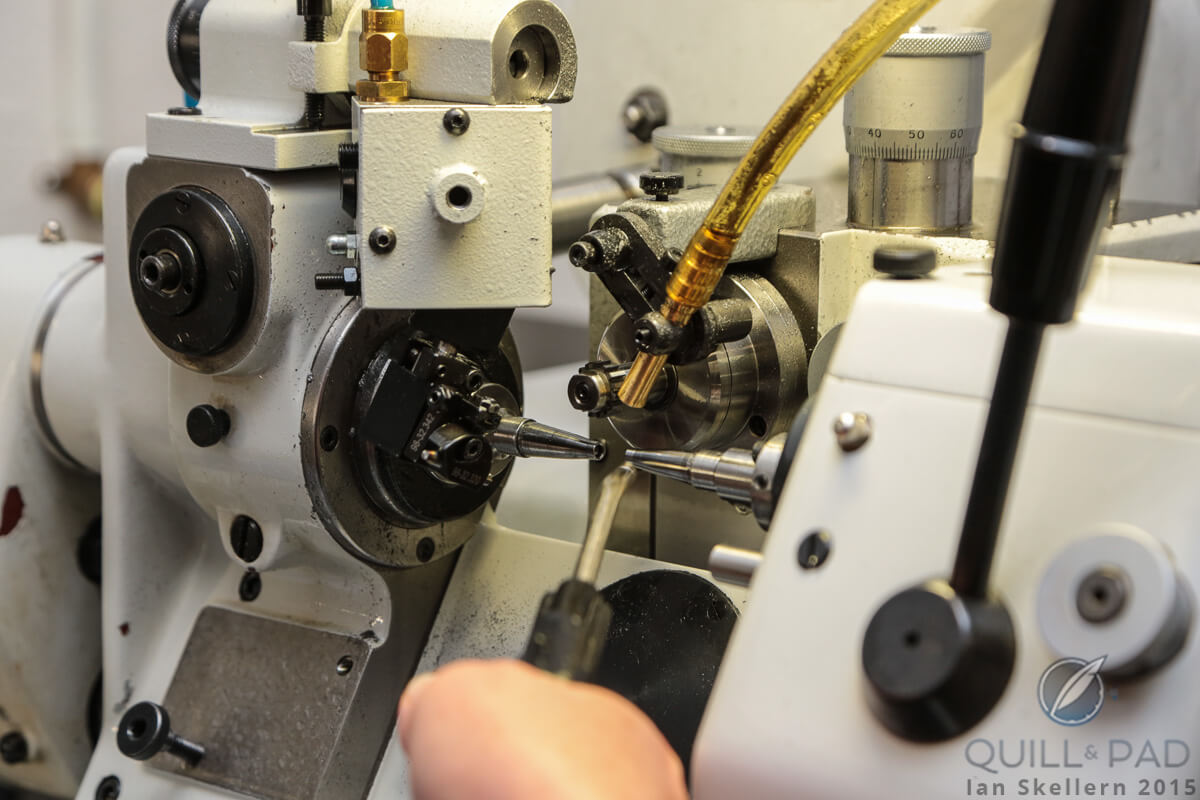
The business end of an automatic lathe at the Nomos manufacture where the component being turned spins while the cutting tool is stable
If you have paid attention to the advertising, marketing, and printed literature that Nomos Glashütte puts out, you would know that there is hardly a more cohesive and interesting set of visuals in the watch world.
No matter which way you look, the “little” brand’s corporate image is not only immaculate, but interesting, eye-catching, and fully reflective of the brand’s personality. That is yet another advantage of creating these equally-as-essential elements in-house.
And not to mention the website, which now includes e-tailing; Nomos is not readily available all over the world in retail shops, though it is exported into 40 countries, so online sales became a must in an increasingly globalized world market. As an aside, Ahrendt points to the United States as the biggest market for Internet sales. Berliner Blau also employs in-house developers and native speakers of English to ensure that the website, press materials, and any other printed literature are as close to perfect as possible – and flexibly so.
“What we have in Glashütte in terms of watchmakers, engineers, salespeople, mechanics, and toolmakers is the equivalent of what we have in Berlin in terms of graphic artists, journalists, programmers, and social media experts,” Ahrendt confirms. “These two locations cross-fertilize if you will.”
Comparisons
“But what I believe is perhaps an important element [with regard to your question] is that we orient ourselves less on what our neighbors [A. Lange & Söhne, Glashütte Original, Moritz Grossmann, and Tutima Glashütte] are doing in terms of production methods, but rather on perhaps the auto industry. Or even ETA and Rolex in Switzerland.”
So now we get to the meat of it: Nomos Glashütte sees itself in a more industrial than luxury light.
“And we don’t have a lot of different movements; we have very few that we produce in high numbers. And we have produced these for many, many years. We have certainly manufactured a few hundred thousand of our Alpha caliber, and the experiences in quality, cost-saving measures, and technology that we have gained in doing so – whether it’s milling, cutting teeth, CNC, or assembly – naturally flows in.”
“And we ‘industrialize’ where it makes sense to do so,” Ahrendt continues. “Like Rolex or ETA also do. With automatic bench systems, automatic oiling, automatic measuring, and even automatic regulation. And I think that these measures all add up.”
Automatic Caliber DUW 3001
We learned about Nomos Glashütte’s brand-new automatic Caliber DUW 3001 in Nomos Glashütte Neomatik: A Sensibly Priced, Efficient, Fashionable, And Mechanically Sound Tribute To The Past And Future Of Glashütte.
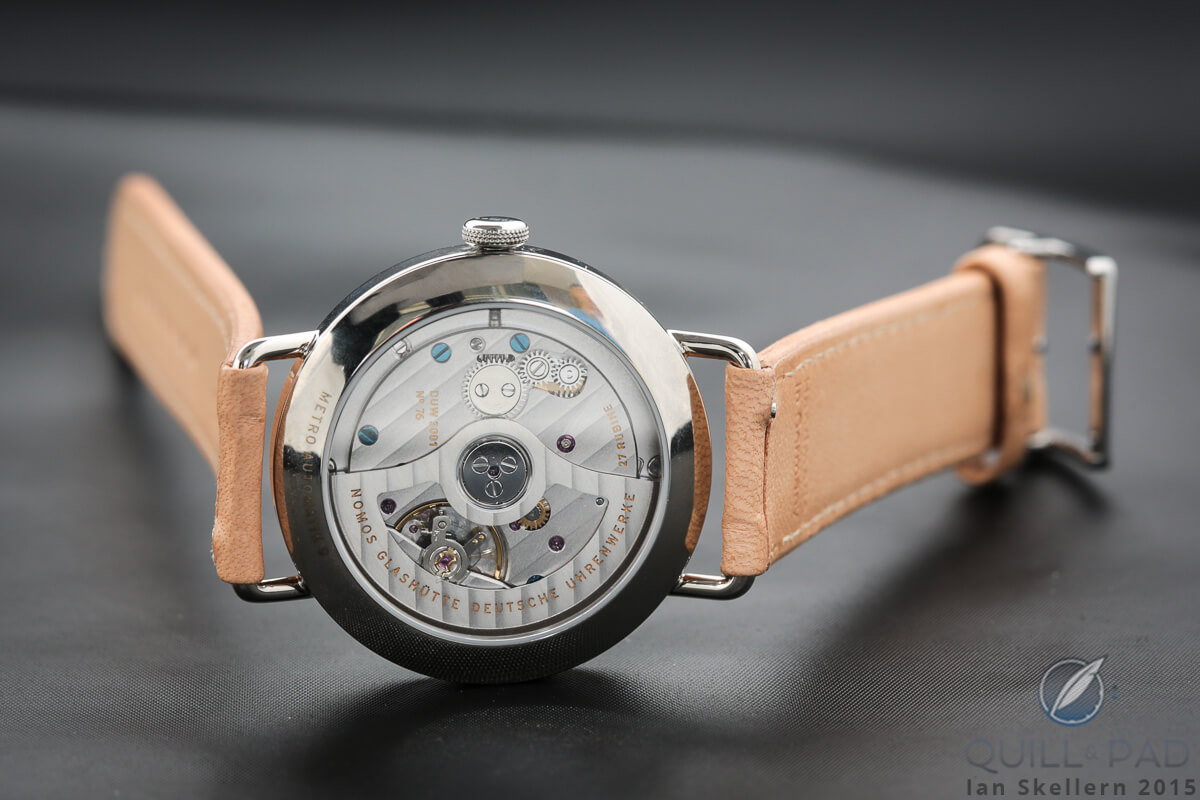
A look at the very aesthetic Caliber 3001 through the transparent case back of the Nomos Glashütte Neomatik Metro
While the Nomos Club outfitted with the Alpha caliber retails at €1,080, the new Neomatic line powered by automatic Caliber DUW 3001 is somewhat more expensive, with a starting price of €2,520 in the Neomatik Ludwig. Why the jump?
For one, the difference between manual winding and automatic. When you stop to consider that, there should be no further questions. Yet, Ahrendt has a few more answers.
“What we have here is a totally modern, completely freshly designed manufacture caliber only 3.2 mm in height,” says Ahrendt.
“Regarding Caliber DUW 3001, we planned several hundred thousand pieces in our technology and production calculations,” Ahrendt continued. “All of our experience from the last 20 years has flowed into this caliber. And we succeeded in creating a new manufacture automatic movement for a watch costing between €2,500 and €2,900.”
The Swing System
Lest we forget: this caliber – and now every other caliber in the Nomos Glashütte range – also contains the Swing System (balance and escapement) introduced at Baselworld 2014 in the new Metro (see Bravo, Nomos Glashütte! Now The Metro Will Change The Watch Game).
“Many people will surely ask how we can do it [keep the price so low despite using one’s own regulator]. Well, the Swing System only uses one set of components. All our watches only use this one set of regulating components, not three, four, or five. Making a small amount of parts would have high development and tooling costs. We make one and only one. And every day we try to make it a little bit better, optimizing, increasing quality. And this is how we did it.”
“We haven’t quite gotten to Nivarox prices just yet,” Ahrendt reveals. “But the [stronger] Swiss franc has helped us this year to just about get there, and only a few little percent fractions are missing until we actually have the same price for this subassembly as Nivarox or ETA.”
So there we have it: economies of scale combined with years and years of experience in making the same product as well as intelligent solutions have allowed Nomos Glashütte to keep its prices at a humane level, at the same time granting many fans of great watchmaking the ability to find a wonderful entryway into the world of fine horology.
“Step by step, working to make a better product, not investing in testimonials and giant parties, just staying simple,” Ahrendt sums up.
Nomos Glashütte has crossed the threshold from a bit player to having the potential to become a major force; the brand is already by far the largest manufacturer of mechanical watches in Germany. And when I compare the three-room house in Glashütte that founder Roland Schwertner inhabited with his company at the beginning to the large amount of real estate and almost three hundred employees that the brand now encompasses, I realize what an amazing accomplishment this is.
Component by component and watch by watch, Schwertner, Ahrendt, and so many others in the team have worked hard to build a brand using not only their heads and their hands, but also their hearts. Nomos makes a true Glashütte product, one that I am proud to have in my own watch box.
For more information, please visit www.nomos-glashuette.com.
* This article was first published on October 9, 2015 at How Does Nomos Glashütte Make A Beautiful Watch With Manufacture Movement For Under $3,000?
You may also enjoy:
Nomos Glashütte Autobahn: Pedal To The Metal!
Nomos Glashütte Director Judith Borowski Takes A Stand And Speaks Out Against Hate
Come On, Nomos, The Ace x Nomos Orion 100 Years Of De Stijl Is Really Just Taking The Mickey


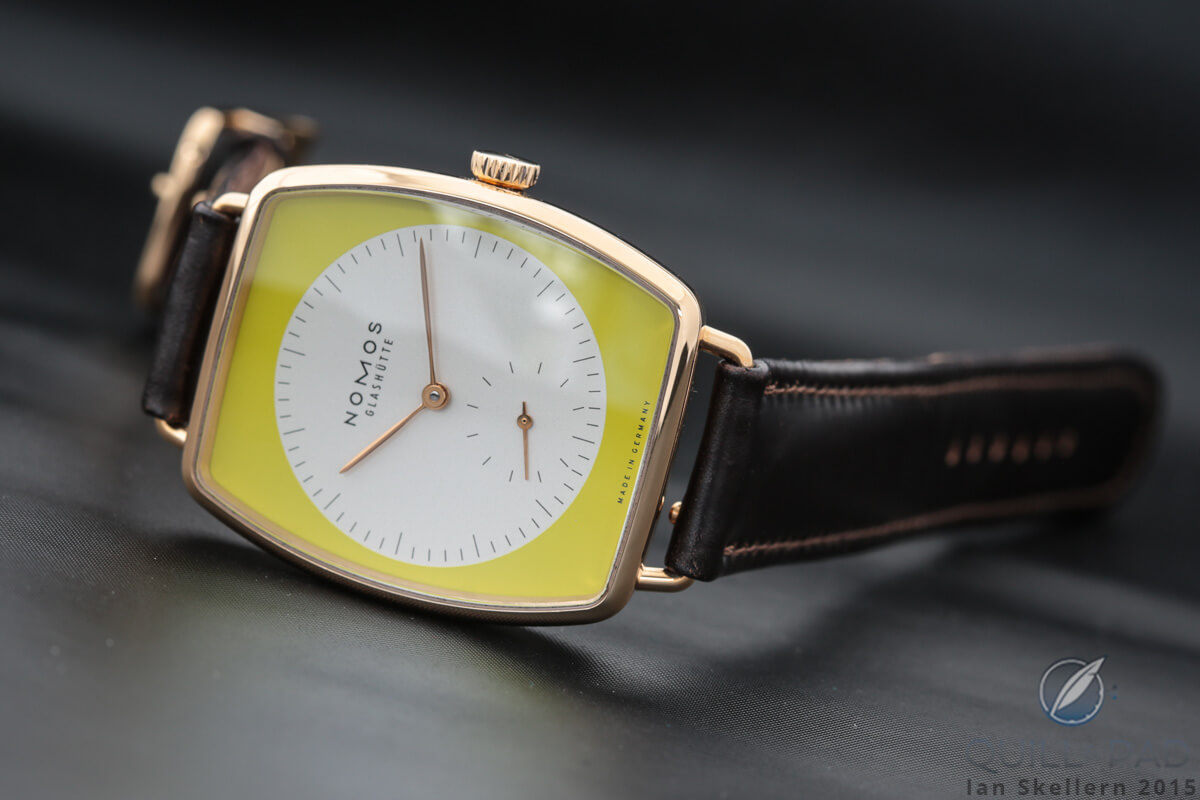
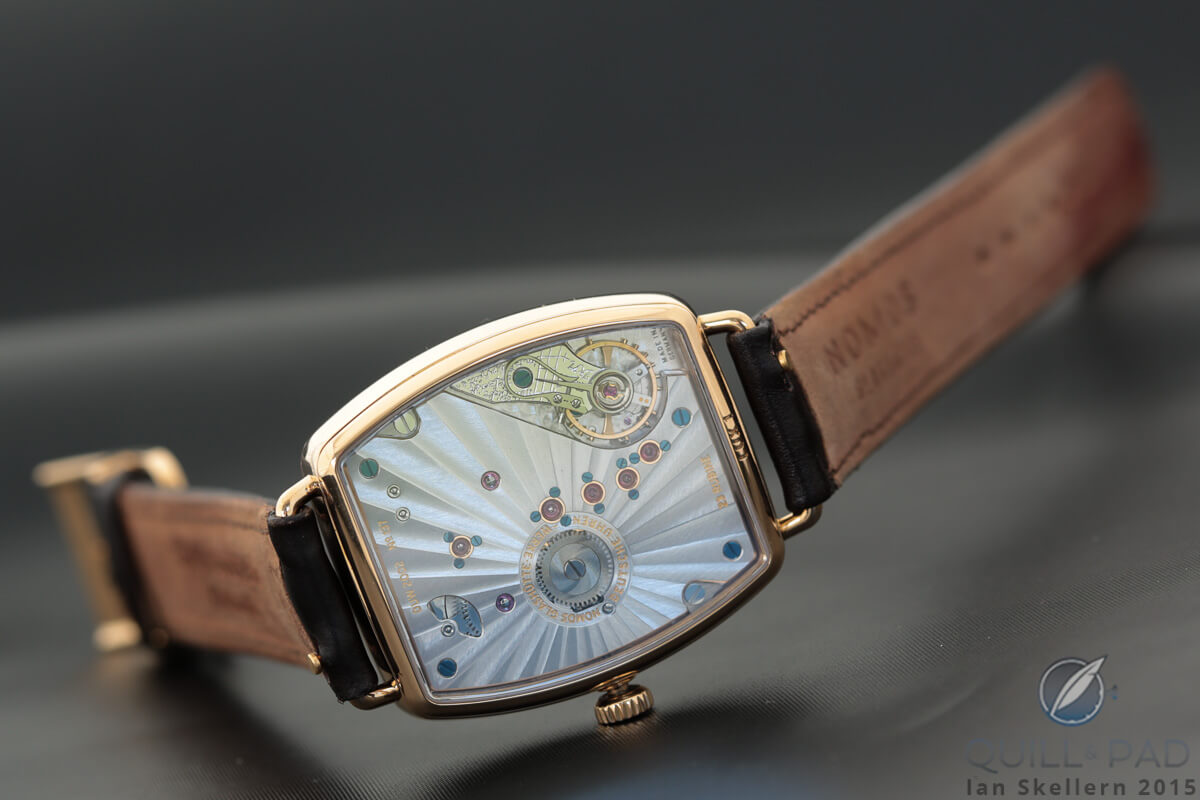
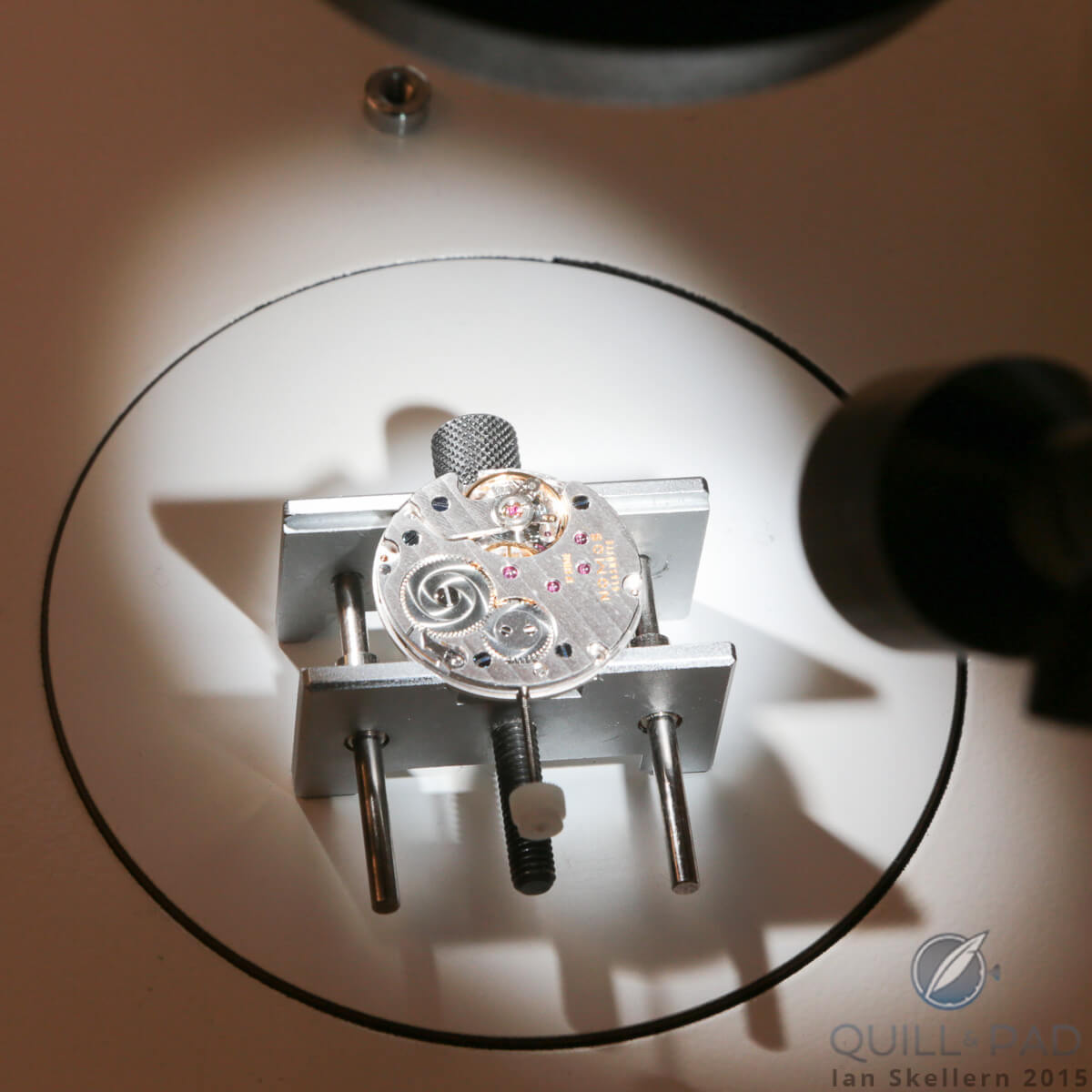
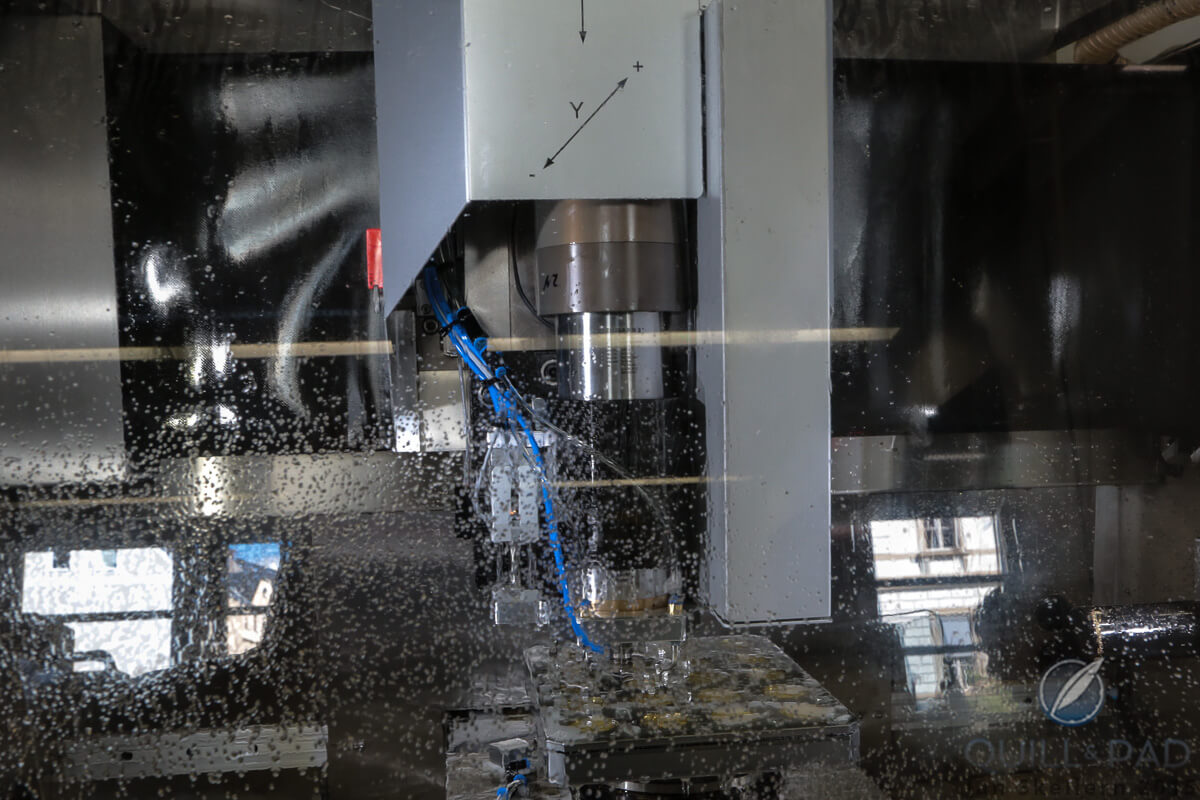


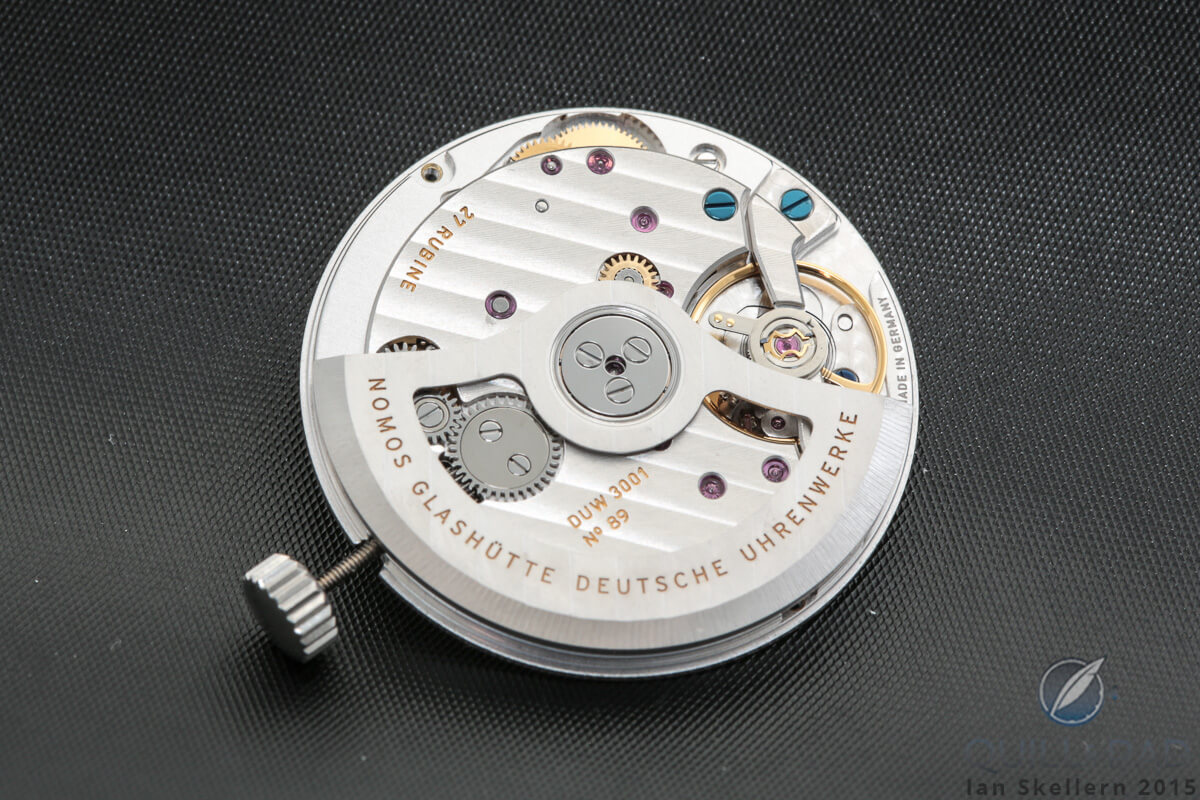



Leave a Reply
Want to join the discussion?Feel free to contribute!